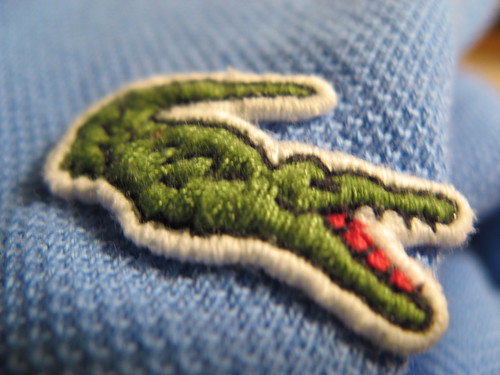 The allure of Lacoste has endured since its inception in 1933 by tennis great Rene Lacoste. Once indicating a modicum of authentic preppy style, it's now been adopted by consumers of all style preferences. As with any brand of note, Lacoste has seen counterfeits produced everywhere from Thailand to South America. In fact, the company just seized $1 million worth of phony polo shirts in Puerto Rico. Even more recently, Lacoste has increased it's focus on counterfeit production in Vietnam, where the company is working with local police in Hanoi to stamp out the problem.
The allure of Lacoste has endured since its inception in 1933 by tennis great Rene Lacoste. Once indicating a modicum of authentic preppy style, it's now been adopted by consumers of all style preferences. As with any brand of note, Lacoste has seen counterfeits produced everywhere from Thailand to South America. In fact, the company just seized $1 million worth of phony polo shirts in Puerto Rico. Even more recently, Lacoste has increased it's focus on counterfeit production in Vietnam, where the company is working with local police in Hanoi to stamp out the problem.One common myth concerning this alligator-embellished merchandise is that product being sold more cheaply on the internet or on the street is authentic but simply has a few "flaws" that barred it from being sold in official stores.
"With global sales of 45 million T-shirts, some errors surely occur during the production process," says Christian London, Lacoste's legal manager. "However, this volume of goods is separated and just a small part of it is sold at Lacoste shops."
As Mr. London notes, any merchandise with slight errors is sold at any number of official factory outlets Lacoste runs throughout the world, in places like New York's outlet center Woodbury Commons. Never is it cast off in such a way that it's accessible to local merchants or unofficial online vendors. Be aware that any merchandise being sold under this guise is questionable at best, and most likely counterfeit.
You can find more info on Lacoste merchandise in the e-auction world here.
Our own guide to staying away from fakes:
- Use official commercial channels. Buying the product in the store allows for warranty and guaranteed authenticity.
- Buttons: The first thing counterfeiters skimp on is price, and with it, quality. Lacoste shirts are renowned for their mother of pearl buttons. Since mother of pearl is a naturally occurring organic compound, no two buttons will ever look alike in terms of sheen and pattern. Also, authentic buttons are free from any lettering.
- Unlock the code: Official codes in your merchandise are unique. Counterfeits generally have a generic code (one such example is 8558).
- Crocodile: We have seen all manner of absurd versions of the illustrious croc, but usually consumers know the real thing when they see it. Fakes can be lopsided, pointing too far up or down, or have a number of other giveaways discussed here.